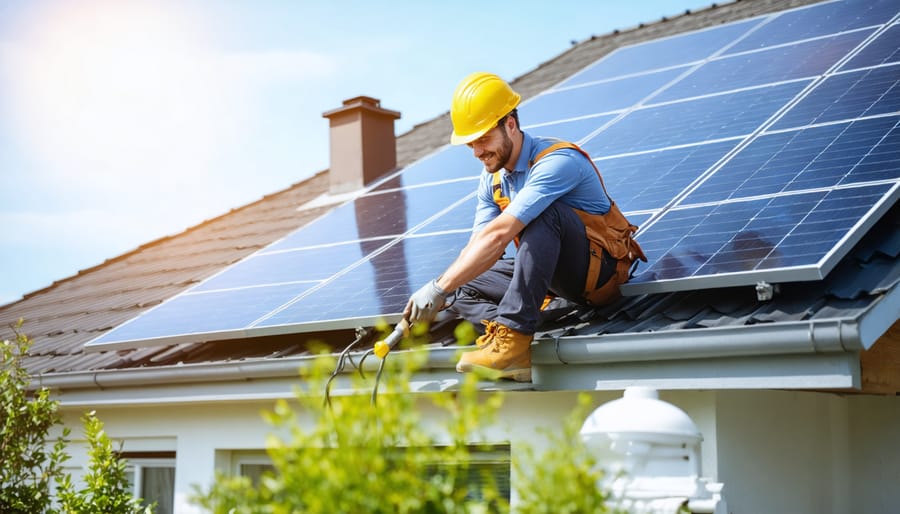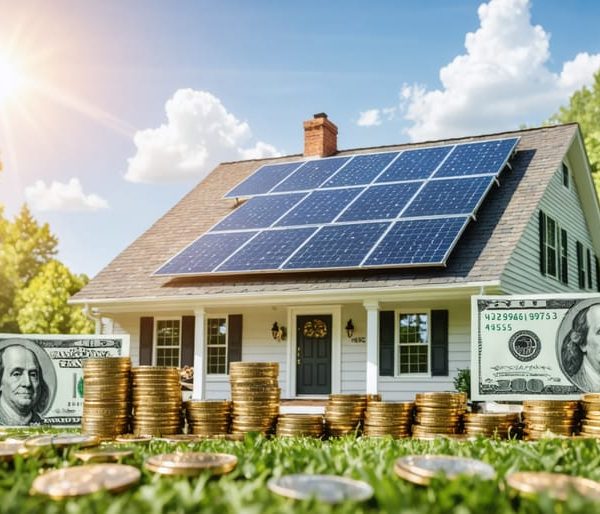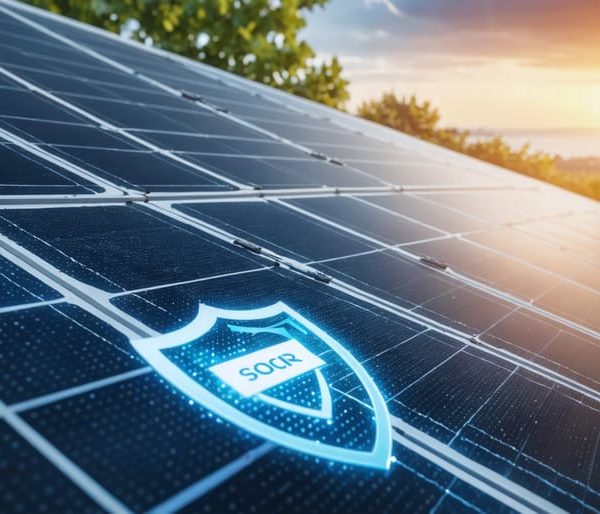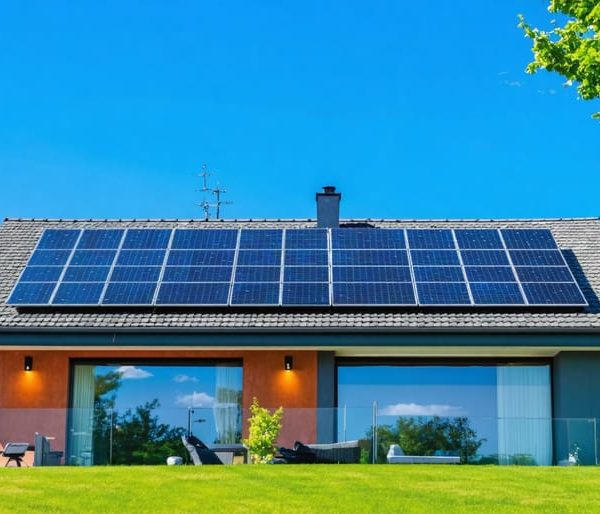How to Find a Solar Installer You Can Actually Trust
Transform your home into a sustainable powerhouse with solar energy – a proven investment that cuts electricity bills while fighting climate change. Today’s solar technology delivers more efficiency and affordability than ever before, making it the perfect time to harness the sun’s unlimited potential.
Whether you’re looking to slash utility costs, increase property value, or reduce your carbon footprint, modern solar solutions offer something for every homeowner. With federal tax incentives, state rebates, and panel prices dropping by over 70% in the past decade, solar power has evolved from an eco-friendly luxury to a practical investment that pays for itself.
This comprehensive guide walks you through everything you need to know about residential solar power – from selecting the right system size and understanding installation requirements to choosing qualified contractors and maximizing your return on investment. We’ll help you navigate the technical details in plain language while avoiding common pitfalls that can impact system performance.
Ready to power your home with clean, renewable energy? Let’s explore how solar can work for your specific needs and circumstances, with expert tips to ensure your solar journey is smooth and successful from start to finish.
Essential Qualifications to Look For
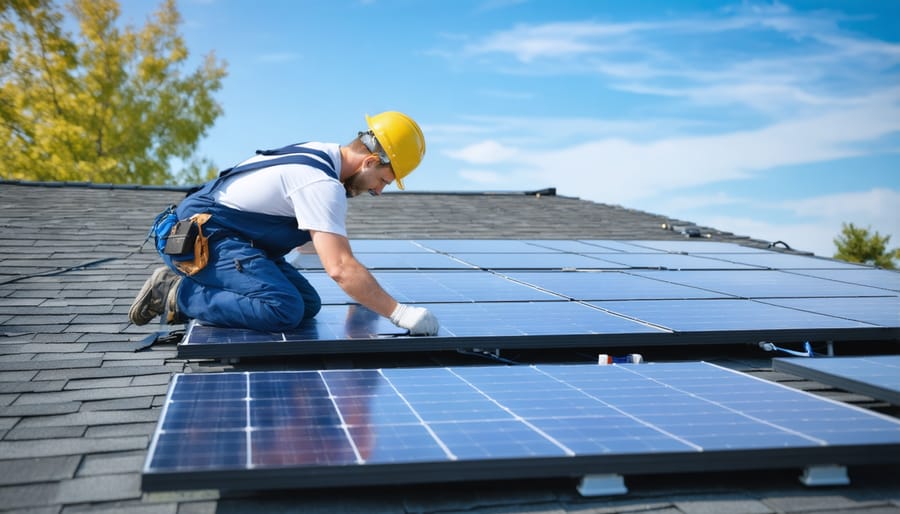
Industry Certifications That Matter
When choosing a solar installer, understanding industry certifications can help ensure you’re working with qualified professionals. The North American Board of Certified Energy Practitioners (NABCEP) certification is widely considered the gold standard in the solar industry. NABCEP-certified professionals have demonstrated extensive knowledge of solar system design, installation, and safety protocols through rigorous testing and hands-on experience.
Beyond NABCEP, look for installers with UL certifications and those who understand solar product certifications for equipment quality assurance. Licensed electricians with specific solar training are also valuable team members for any installation project.
Other important credentials include:
– State-specific solar contractor licenses
– OSHA safety certifications
– Manufacturer-specific training certificates
– Building Performance Institute (BPI) certification
Remember that certifications should be current and verifiable. Most certification bodies maintain online databases where you can confirm an installer’s credentials. While certifications aren’t the only factor to consider, they provide valuable assurance that your installer has invested in proper training and follows industry best practices.
Experience and Track Record
When evaluating solar installers, start by reviewing their portfolio of completed projects. Ask for references from previous customers and reach out to them directly. Good installers will proudly share photos of their installations and connect you with satisfied clients.
Look for companies with at least 5 years of experience in your area. Local experience matters because installers should understand regional climate conditions, building codes, and permit requirements. Check if they’re certified by the North American Board of Certified Energy Practitioners (NABCEP), which is the gold standard in solar certification.
Review their online presence, including customer reviews on independent platforms. Pay attention to how they handled any negative feedback or installation challenges. A strong track record should show consistent quality work and positive customer experiences.
Don’t forget to verify their license, insurance, and warranty offerings. Experienced installers typically provide comprehensive warranties covering both workmanship and equipment. They should also have a proven history of honoring these warranties and providing reliable after-installation support.
Ask about their completion rate and typical project timeline. Reliable installers can provide clear schedules and have a history of completing projects on time.
Red Flags to Watch Out For
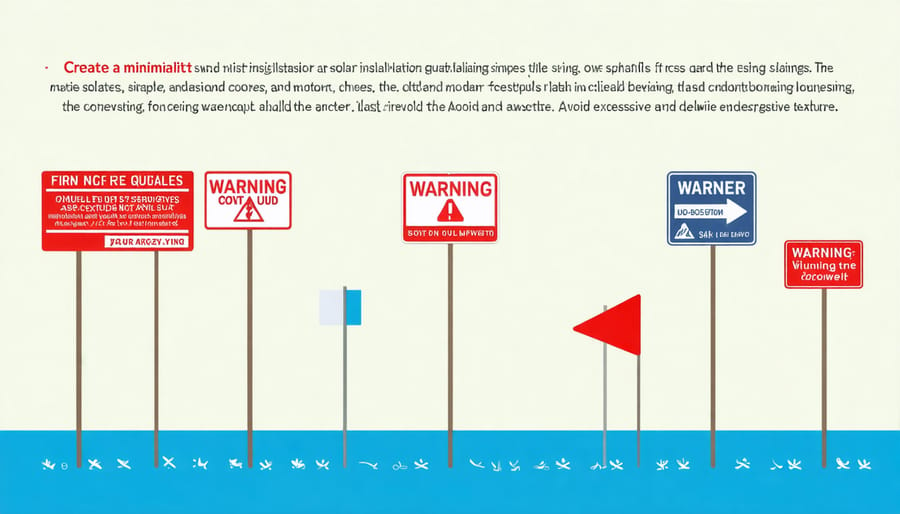
Pricing and Quote Transparency
When evaluating solar quotes, be wary of prices that seem too good to be true – they usually are. Legitimate solar installers provide detailed breakdowns of equipment costs, labor, permits, and warranties. Watch out for companies that pressure you with “limited-time offers” or refuse to put their quotes in writing.
A trustworthy quote should include specific information about the solar panels’ make and model, inverter specifications, and total system size in kilowatts. Be suspicious of contractors who promise unrealistic energy savings or make guarantees about your future electricity bills without analyzing your actual usage patterns.
Request multiple quotes from different installers and compare them carefully. If one quote is significantly lower than others, ask why. Sometimes companies use lower-quality equipment or cut corners on installation to reduce costs. Also, be cautious of companies that require large upfront deposits or won’t discuss financing options transparently.
Remember that the cheapest option isn’t always the best value. Focus on the overall quality, warranty coverage, and the installer’s track record rather than just the bottom line.
Contract and Warranty Issues
When investing in solar power, understanding your contract and warranty terms is crucial to protect your solar investment. Look for comprehensive warranties that cover equipment, performance, and workmanship. Most quality solar panels come with 25-year performance warranties, while inverters typically carry 10-15 year coverage.
Pay special attention to these key contract elements:
– Clear timeline for installation and project completion
– Detailed cost breakdown and payment schedule
– Performance guarantees and minimum energy production estimates
– Maintenance responsibilities and service agreements
– Roof warranty protection and repair obligations
Your warranty should specifically outline:
– Panel degradation rates and performance guarantees
– Coverage for equipment defects and failures
– Labor costs for repairs and replacements
– Transferability if you sell your home
– Claims process and response time commitments
Keep all documentation in a safe place and register your warranties promptly. Consider taking photos of serial numbers and keeping digital copies of all paperwork. If anything seems unclear, don’t hesitate to ask questions before signing.
Questions to Ask Before Hiring
Technical Expertise
When it comes to system design and installation, there are several key technical considerations to keep in mind. First, assess your roof’s orientation and pitch – south-facing roofs with a 30-45 degree angle typically offer optimal sun exposure. However, modern panel technology can work effectively even in less-than-ideal conditions.
Your home’s electrical system needs careful evaluation. A professional installer should examine your electrical panel’s capacity and determine if upgrades are necessary. They’ll also calculate your energy needs based on past utility bills to properly size your system.
Installation methods vary depending on your roof type. While most installations use mounting brackets attached to roof rafters, some situations might require special mounting solutions. Flat roofs often use ballasted systems, while metal roofs may need specific clamp attachments.
If traditional roof mounting isn’t suitable, consider ground-mounted arrays or carport installations. These alternatives can offer easier maintenance access and optimal positioning. For those who can’t commit to purchasing panels outright, solar PPA programs provide a viable alternative.
Remember to factor in future expansion possibilities. Many homeowners start with a smaller system and add panels later as their energy needs grow. Ensure your initial design includes the necessary inverter capacity and mounting space for potential additions.
Customer Service and Support
After your solar installation is complete, reliable customer service and support become crucial for maintaining your system’s optimal performance. Most reputable solar companies offer comprehensive post-installation support packages that typically include regular system monitoring, maintenance checks, and responsive customer service.
Look for providers that offer 24/7 monitoring services, allowing them to detect and address potential issues before they affect your system’s performance. Many companies now provide user-friendly mobile apps or online portals where you can track your system’s performance, energy production, and savings in real-time.
When evaluating support services, ask about response times for service calls, warranty coverage, and the availability of local technicians. Quality providers should offer clear communication channels, including phone support, email, and emergency contact numbers for urgent issues.
Regular maintenance typically includes annual inspections, panel cleaning services, and performance optimization checks. Some companies offer extended warranty packages that cover both equipment and labor for added peace of mind.
Remember to keep detailed records of all maintenance visits and communications with your service provider. This documentation can be valuable for warranty claims and tracking system performance over time. If you experience any issues, don’t hesitate to contact your provider – prompt attention to small problems can prevent larger issues down the line.
How to Compare Multiple Quotes
Understanding Price Differences
When comparing solar quotes, it’s essential to understand why prices can vary significantly between providers. The main factors influencing cost differences include equipment quality, installation expertise, and financing options. Higher-quality panels and inverters typically command premium prices but often deliver better long-term performance and reliability.
Look closely at the components each installer proposes. Some may recommend premium brands while others opt for budget-friendly alternatives. Neither choice is inherently wrong – it depends on your specific needs and budget. Consider warranty terms, efficiency ratings, and the manufacturer’s track record when evaluating equipment options.
Labor costs can also vary based on installation complexity and crew expertise. Companies with more experienced teams might charge more but often provide superior workmanship and attention to detail. Additionally, some quotes may include extras like extended warranties, monitoring systems, or roof repairs that others don’t.
Always request a detailed breakdown of costs and ensure you’re comparing similar system sizes and specifications. Don’t automatically choose the lowest bid – focus on finding the best value for your investment while considering long-term reliability and performance.
Equipment Quality Comparison
When evaluating solar equipment, focus on both panels and inverters as they’re the heart of your system. Top-tier solar panels from manufacturers like SunPower, LG, and REC typically offer efficiency rates above 20% and come with 25-year warranties. Look for panels with a positive temperature coefficient below -0.35% per degree Celsius, ensuring better performance in hot conditions.
For inverters, leading brands like Enphase and SolarEdge have established reputations for reliability. Microinverters generally offer better performance for shaded installations, while string inverters are more cost-effective for unshaded arrays. Pay attention to the CEC efficiency rating – good inverters should be above 96%.
Consider degradation rates when comparing panels. Premium panels typically degrade at 0.3% per year or less, while standard panels might decline at 0.5-0.7% annually. Check for certifications like IEC 61215 and IEC 61730, which validate durability and safety standards.
Don’t be swayed solely by price – the most affordable options aren’t always the most cost-effective long-term. Factor in warranty terms, manufacturer stability, and local service support when making your final decision.
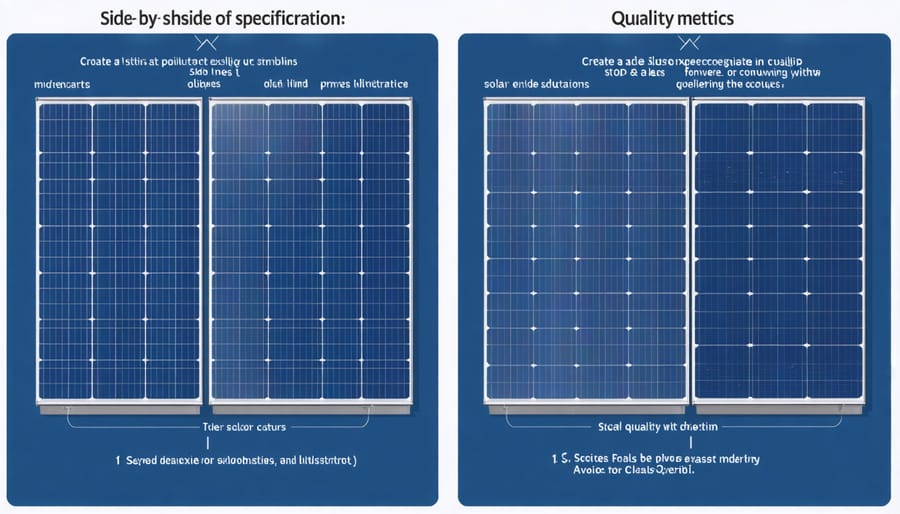
Making the Final Decision
Checking References
Verifying references is a crucial step in selecting your solar installer. Start by requesting at least three recent customer references, preferably from installations completed within the past year. When contacting these references, ask specific questions about their experience, such as installation timeline, crew professionalism, and post-installation support.
Don’t hesitate to ask about any challenges they encountered and how the company addressed them. Key questions should include: “Would you choose this company again?” and “How responsive was their customer service team?”
Consider visiting completed installations in person if possible. This gives you a firsthand look at the company’s workmanship and allows you to see how the panels have performed over time. Many satisfied customers are happy to share their experiences and solar energy journey.
Online reviews can supplement personal references, but focus on detailed reviews that describe specific experiences rather than simple star ratings. Check multiple platforms like Google Reviews, Better Business Bureau, and local solar forums. Look for patterns in both positive and negative feedback, paying special attention to how the company responds to critical reviews.
Remember, thorough reference checking now can save you considerable headaches later.
Final Verification Steps
Before powering up your new solar system, complete these essential final checks to ensure everything is working perfectly. Start by visually inspecting all panels for any visible damage or debris. Verify that all mounting hardware is properly tightened and sealed against potential water intrusion.
Review your monitoring system setup to confirm it’s correctly tracking your system’s performance. Test all electrical connections and ensure the inverter displays normal operation status. Check that your backup power system, if installed, switches on correctly during a simulated power outage.
Document your system’s initial readings and take photos of the completed installation for your records. Schedule your final inspection with local authorities and utility company to receive official approval. Create a maintenance calendar marking important check-up dates and cleaning schedules.
Finally, familiarize yourself with your system’s emergency shutdown procedure and keep the manual in an easily accessible location. Consider scheduling a follow-up visit with your installer after a month of operation to address any questions or concerns that may arise during initial use.
Remember, proper verification now prevents issues later and ensures your solar investment performs optimally for years to come.
Solar power represents a powerful step toward a more sustainable and cost-effective future for homeowners and businesses alike. Throughout this guide, we’ve explored the essential aspects of solar energy adoption, from understanding the basics of photovoltaic systems to navigating installation processes and maximizing your return on investment.
Remember that making the switch to solar is both an environmental commitment and a smart financial decision. By reducing your carbon footprint, you’re contributing to a cleaner planet while potentially saving thousands on your energy bills over time. The technology has never been more accessible, efficient, or affordable than it is today.
Whether you’re considering rooftop panels for your home or exploring commercial solutions for your business, the key is to start with thorough research and partner with qualified professionals. Take advantage of available tax incentives, carefully evaluate your energy needs, and ensure your property is solar-ready before making the leap.
The transition to solar power doesn’t have to be overwhelming. Start small if needed, perhaps with a few panels, and expand your system as your needs and budget allow. The most important step is simply to begin your solar journey.
Ready to embrace clean, renewable energy? Take action today by scheduling a solar assessment or connecting with certified installers in your area. Your sustainable future awaits!

